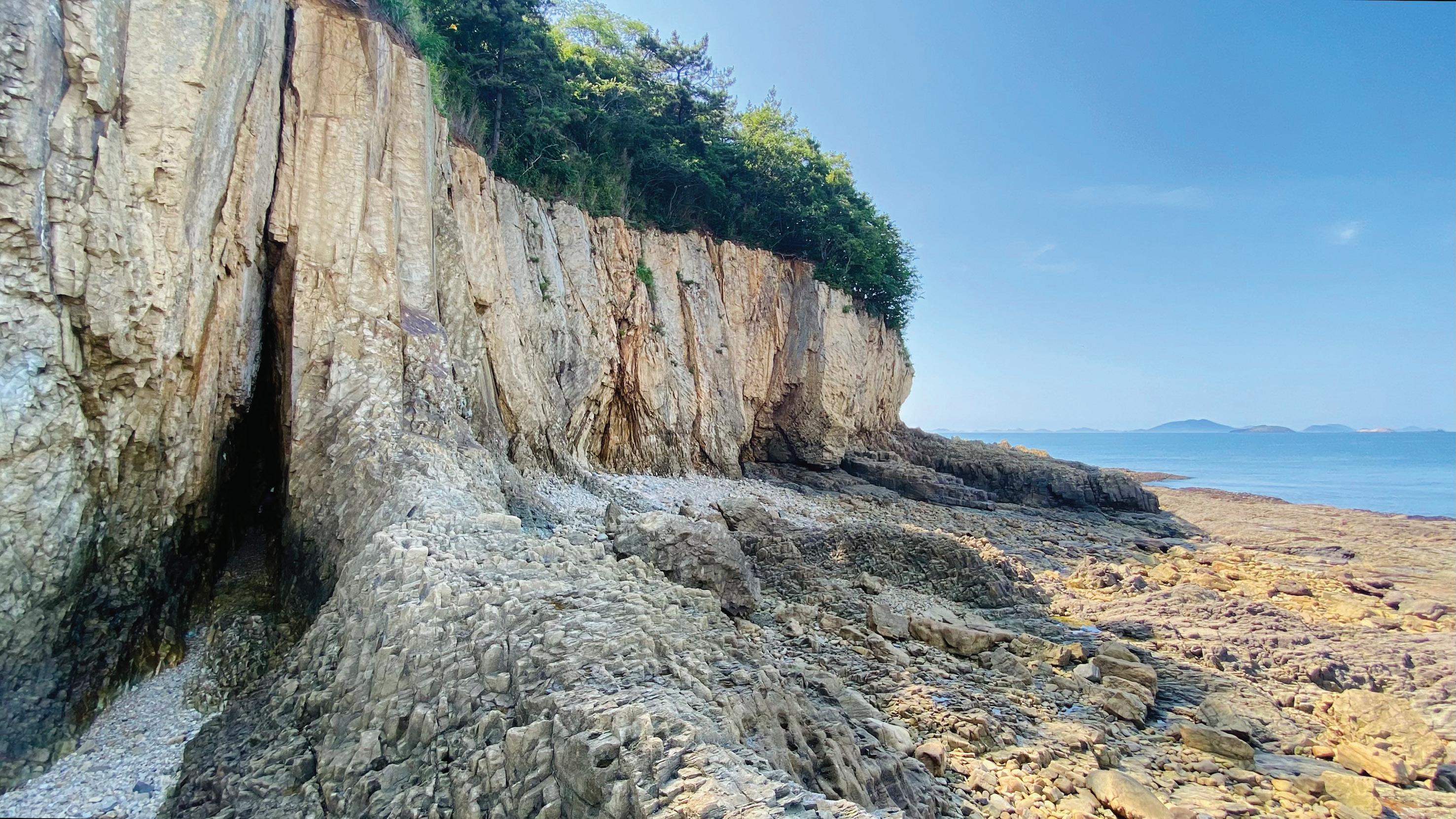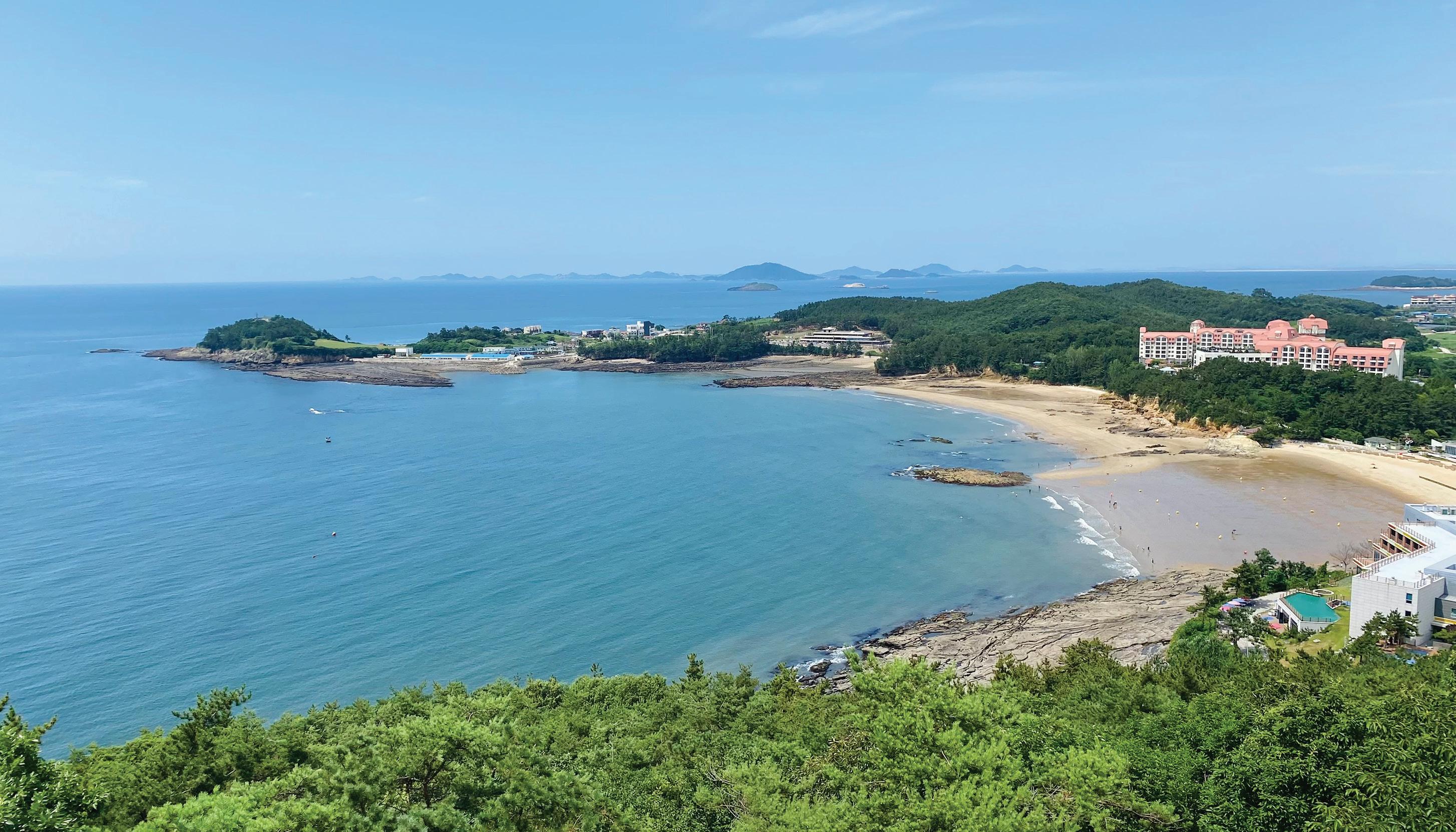
4 minute read
Three Lazy Hikes Along the West Sea
By Isaiah Winters
Ihate the West Sea.
Advertisement
It’s shallow and muddy with a color palette usually ranging from some metallic sludge to full-on dirty dishwater. In last year’s August issue, I said, “If Korea’s three seas were its offspring, the West Sea would be the red-headed stepchild,” and I stand by that. That’s also what makes this underachieving littoral perfect for my next writing and photography challenge – to find beauty in this slacker of a sea. Therefore, in this month’s installment of “Lost,” I’ll take you on three lazy West Sea hikes with views so good you’ll forget how crappy Korea’s west coast can be.
DAEDEOK-SAN, YEONGGWANG-GUN (대덕산, 영광군)
This 240-meter mountain doesn’t look like much on a map, but when you consider where it is and what it overlooks, the payoff is exceptional. If you park at its northernmost trailhead, the hike to the summit is just under a kilometer and ends at a perfectly placed pavilion draped with “Do Not Enter” signs, as the somewhat aging wooden structure has been deemed unsafe by local authorities. However, if you’re cheeky enough to skirt all the danger bunting, the view of the Watan Stream bending between Beopseong-po on the right and lush green fields on the left before spilling into the West Sea is truly impressive. While enjoying the breeze up there for about half an hour, I shot what’s probably my favorite timelapse to date. The sunlight would periodically flash through the clouds and highlight the fields below, bringing me about as close to nirvana as the West Sea can.
By the way, if the view inspires a little déjà vu, that’s probably because what you’re seeing is the humble discount version of Suncheon-man. Whereas a visit to Suncheon-man from Gwangju takes an hour and a half one way, leaves you 20 minutes outside the city, and costs 15,000 won for a standard adult ticket, the drive to Daedeok-san takes only 50 minutes, leaves you five minutes outside the city, and doesn’t end at a ticket booth. Also, the city beside it isn’t just any Podunk village – it’s Beopseong-po, one of the top places in the country to get gulbi (굴비), or dried yellowtail. After gorging yourself there, a 10-minute drive across the harbor’s main bridge will bring you to Baeksu Coastal Road (백수해안도로), one of the best coastal boardwalks in the country. If you’ve got a car, this is a day trip you shouldn’t skip.
DALKI-BONG, BUAN-GUN (닭이봉, 부안군)
Though a mere 85 meters above sea level, this tiny peak affords you a great view of the westernmost edge of the Byeonsan Peninsula and Gyeokpo Beach. On a clear day, you can easily make out the distant islands of the Gogunsan Archipelago, and if the sunlight is strong enough, the waters may even appear blue! For lazy types, this hike’s for you, as you can literally drive to the top, park at the base of the observatory, and take the stairs straight to the observation deck. (If only there were an elevator, too!) If instead you actually make the effort to hike all the way up to the observatory, you’re rewarded on the way back with a staircase down to Gyeokpo’s vast tidepools and tiny sand beach. To my surprise, even at low tide (pictured), the water is less murky and the sand less muddy than is usual for the West Sea, making this beach one of the southwest’s better places to swim.


If swimming’s not your thing, or if inclement weather keeps you ashore, another spot nearby worth checking out is the extreme westernmost tip of the Byeonsan Peninsula (pictured). You can walk or drive there from the beach and check out all the tiny caves and weird rock formations that hem in tidepools teeming with life. If you want to grab a meal while you’re in the area, there’s a little seafood market by the beach, and for anyone smitten by the place, there’s a giant, pink-roofed hotel (pictured) that you can book for the night. We stayed there a few summers ago when it offered outdoor wine tasting at sunset and, I have to say, it was a pretty cool experience. My only warning about this area is that, as per usual at Korean beaches, the lifeguards are absolute schoolmarms with nothing much to do, so they’re guaranteed to intervene if you do anything outside their stunted definition of “fun.” Upon arrival, I managed to get a whistle blown at me in under three minutes. If you visit Gyeokpo Beach, see if you can beat my time!
DAEJANG-BONG, GUNSAN-SI (대장봉, 군산시)
If big dikes are what you like, Korea’s got the biggest of them all. The Saemangeum Seawall, for all its pointless ecological destruction, is an engineering marvel that anyone with a car can appreciate. Arguably its most redeeming feature is that it links up with the aforementioned Gogunsan Archipelago via a series of bridges, and this allows you to drive over the West Sea uninterrupted for a ridiculous distance until you reach the little island of Daejang-do. The island is the furthest west you can possibly drive in North Jeolla Province, and the road terminates just short of a hiking trail that takes you up the island’s most prominent peak, aptly called Daejang-bong. At just 142 meters, the peak certainly won’t give you altitude sickness, but the summit’s unobstructed views and steep drop off may inspire a little vertigo if you don’t handle heights well. With the ascent not taking long, I recommend going close to sunset to soak in the best views; the outstanding hiking infrastructure will make your descent just before nightfall quick and convenient.

Originally, we’d planned to stay overnight at the foot of the peak, but the pensions were ridiculously overpriced, so before heading home, we just grabbed some seafood noodles and jeon at Red Bridge (빨간다리), one of the hole-inthe-wall restaurants on nearby Jangja-do. The owner is a sweetheart with a music playlist that’s sure to surprise you. If we’d had more time and better weather, we would have seen more of the archipelago’s heterogeneous beaches, ranging from long, crescent-shaped sandbars to small pebble beaches nestled in tiny coves. Among the latter, Okdol Beach on Seonyu-do was impressive for its flat, tile-like pebbles and extensive boardwalk. Unfortunately, many of the best beaches face south, which means they’re more likely to get battered by bad weather. Case in point, that day a wall of horizontal rain from the south forced us to cut our visit to Okdol Beach short. Still, I’d absolutely return to Daejang-bong and can’t recommend the archipelago highly enough. Go and visit!


All said and done, I think I hate the West Sea a little less.
Hailing from Chino, California, Isaiah Winters is a pixel-stained wretch who loves writing about Gwangju and Honam, warts and all. He’s grateful to have written for the Gwangju News all these years. More of his unique finds can be seen on Instagram @d.p.r.kwangju and YouTube at Lost in Honam.









